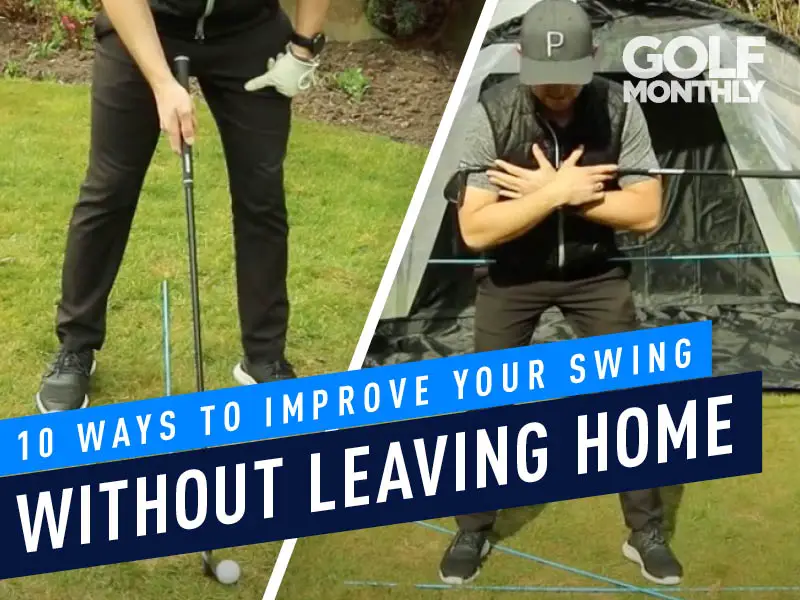How To Improve Your Golf Swing At Home

Improving your golf swing is an ongoing pursuit for golfers of all skill levels. Whether you’re a beginner looking to establish a solid foundation or an experienced player aiming to refine your technique, practicing your swing at home is a convenient and effective way to enhance your skills. In this comprehensive guide, we will explore a variety of techniques and exercises that will help you improve your golf swing from the comfort of your own home. By dedicating time to focused practice and utilizing effective training methods, you can make significant strides in developing a more consistent and powerful golf swing.
Golf is a sport that demands precision, control, and fluidity in every swing. While the driving range and golf course are ideal settings for practice, there are plenty of opportunities to refine your swing right in your own living room, backyard, or garage. By creating a dedicated practice space and utilizing the right tools and drills, you can make substantial progress without leaving home.
Throughout this guide, we will delve into various aspects of the golf swing, from fundamental elements such as grip, stance, and alignment to more advanced techniques like generating power and maintaining timing and tempo. We’ll explore how to assess and analyze your current swing, offer practical tips for improvement, and introduce drills and exercises that can be easily performed at home.
The beauty of practicing your golf swing at home is that it allows you to focus on specific aspects of your technique in a controlled environment. You can experiment with adjustments, record and review your swing, and work on building muscle memory without the distractions of a golf course. Additionally, by incorporating fitness and conditioning exercises tailored to golf, you can enhance your overall physical fitness and contribute to a more efficient and powerful swing.
So, if you’re ready to take your golf swing to the next level, grab your club, clear some space, and join us on this journey of improving your golf swing at home. With dedication, practice, and a commitment to improvement, you’ll be well on your way to achieving greater consistency, accuracy, and distance in your shots.

Assessing and Analyzing Your Current Swing
Evaluating Your Swing Mechanics
To improve your golf swing, it’s important to assess your current swing mechanics. Focus on key aspects such as grip, stance, alignment, and posture. Analyzing your swing will help you identify areas for improvement and lay the foundation for a more effective swing.
Recording and Reviewing Your Swing
Recording and reviewing your swing is a valuable tool for self-analysis. Utilize video recording devices or smartphone apps to capture your swing from various angles. Reviewing your swing in slow motion can help you identify flaws, inconsistencies, and areas that require adjustment.
[Pattern Breaker: Practice Tip – Using Slow-Motion Analysis]
Developing Essential Fundamentals
Establishing a Solid Grip
A proper grip is fundamental to a successful golf swing. Focus on achieving a neutral grip that allows for proper clubface control and a natural release. Experiment with grip variations to find the one that feels most comfortable and promotes a square clubface at impact.
Mastering Proper Stance and Alignment
Your stance and alignment play a crucial role in the effectiveness of your swing. Maintain a shoulder-width stance, with your feet parallel to the target line. Proper alignment ensures that your body is positioned correctly in relation to the target, setting the stage for a more accurate and powerful swing.
[Pattern Breaker: Alignment Drill – The Railroad Tracks]
Enhancing Swing Mechanics
Achieving a Balanced Backswing
A balanced backswing sets the stage for a powerful downswing. Focus on rotating your shoulders and hips while maintaining a stable lower body. This rotation allows for proper coil and stores energy to be unleashed during the downswing.
Generating Power with the Downswing
The downswing is where power is generated and transferred to the golf ball. Initiate the downswing with your lower body, shifting your weight from your back foot to your front foot. This motion creates a powerful sequence, enabling you to unleash maximum clubhead speed and distance.
[Pattern Breaker: Downswing Drill – The Hip Bump]
Improving Timing and Tempo
Establishing Proper Timing
Timing is crucial for a consistent and effective golf swing. Work on synchronizing your upper and lower body movements to achieve a smooth transition from backswing to downswing. Practicing drills that promote proper timing will help you develop a more fluid and efficient swing.
Developing Consistent Tempo
Maintaining a consistent tempo throughout your swing is key to achieving repeatable results. Find a rhythm that suits your natural swing and practice maintaining that tempo. Consistent tempo leads to improved timing, better ball contact, and increased accuracy.
[Pattern Breaker: Tempo Drill – The Metronome Challenge]
Practicing Essential Golf Swing Drills at Home
Mirror Work and Swing Path Drills
Utilize a mirror to observe and analyze your swing mechanics. This visual feedback helps you identify and correct any swing flaws. Focus on maintaining a proper swing path, ensuring that the club follows a balanced and efficient arc from start to finish.
Indoor Practice Aids and Training Tools
Take advantage of indoor practice aids to enhance your training sessions at home. Alignment sticks, impact bags, and putting mats provide valuable opportunities for focused practice. Alignment sticks can help you maintain proper alignment and swing path, while impact bags allow you to work on your contact and follow-through. Additionally, putting mats enable you to refine your putting stroke and develop a consistent roll.
[Pattern Breaker: Putting Drill – The Gate Drill]
Integrating Fitness and Conditioning for Improved Swing
Strength and Flexibility Exercises
Improving your physical fitness and flexibility can greatly impact your golf swing. Incorporate exercises that target core strength, flexibility, and mobility. Strengthening your core helps maintain stability throughout your swing, while flexibility exercises improve your range of motion and allow for a more fluid and unrestricted movement.
Cardiovascular Conditioning and Endurance
Golf is a physically demanding sport that requires cardiovascular endurance. Engaging in activities such as brisk walking, jogging, or cycling can improve your overall fitness level and help you maintain energy and focus throughout your round. Building cardiovascular endurance also enhances your ability to generate power and maintain consistency in your swing.
[Pattern Breaker: Core Exercise – The Plank]
Conclusion: Improving your golf swing at home is not only convenient but also an effective way to enhance your game. By assessing and analyzing your current swing mechanics, developing solid fundamentals, refining swing mechanics, practicing essential drills, and incorporating fitness and conditioning, you can make significant strides in improving your golf swing. Remember, consistent and focused practice is key to progress. So, take advantage of the resources available to you at home, set aside dedicated practice time, and watch your golf swing transform. With perseverance and a commitment to improvement, you’ll see the results translate to better performance on the course.





